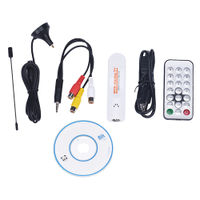Watch DVB-T Transmissions with VLC
Omega usb dvb-t tuner t300 nano mpeg-4 h.264 avc hd usb 41398 more. Install the driver to establish a cable connection between your compatible Nokia phone and a compatible PC.Important for Windows 2000 or XP or Vista users: Drivers for the Nokia DKE-2, DKU-2, CA-42, CA-53, CA-70, and CA-101 cables are now. DVB-TV 878 Digital Tuner driver falls under the monitor and video cards category. The device is manufactured by Samsung. It is compatible with Windows 98, 2000, NT, 2003 and XP platforms. Additional requirements include Windows 98 SE and ME.
To watch DVB-T transmissions, you must have a DVB-T tuner with its drivers installed.
You also need a list of all the transmission frequencies for your local area. People in Sydney can refer to this article. Otherwise, Google for your local transmitters, scan for them with another program or try standard frequencies manually.
Loading DVB-T Transmissions in VLC
- Open VLC
- Click on the Media menu and then Open Capture Device or use the keyboard shortcut
Ctrl + C - Click on the dropdown menu of Capture mode and select TV - digital
- Change your Delivery System if your country does not use DVB-T
- Enter the transmission frequency of the channel you wish to watch into Transponder/multiplex frequency, ensuring you convert to kHz (e.g. A transmission at 177.500 MHz = 177500 kHz).
- The Bandwidth option can be left on Automatic, however if the stream fails to load, try select an option (Google for the bandwidth or try each of them until one works).
- Click Play or Enqueue to watch.
Determine the SID (Service/Programme ID) of a Channel


If your DVB-T transmission is by a TV Network which broadcasts multiple channels, you will need to determine the SID of each channel if you want to create a shortcut or playlist to each specific channel. People in Sydney can refer to this article
If you just want to switch between channels manually through VLC, you can load up a transmission, click on the Playback menu, select Program and then select the channel you want to switch to.
To determine the SIDs of all the channels of a specific network:
- Load up a transmission
- Click on the Tools menu and select Media Information
- Click on the Codec tab
- Ignore and scroll past all the items labelled Stream #
- Look for nodes that begin with a channel name followed by a number in square brackets. The number in the brackets is the SIDs
Creating a Playlist of Channels
You can create a playlist of channels by enqueuing channels to the playlist and then saving the playlist to a file.
It may be easier to manually create the playlist file, an XML file with an .xspf extension. Attached below is a sample VLC playlist file for Sydney.
- Create playlist entries by creating
<track>tags inside the<trackList>tag. - Convert your transmission frequency into Hz and substitute into the
<location>tag afterfrequency= - Ensure each
<vlc:id>tag contains a unique integer, counting up. - You can specify a specific channel with the
<vlc:option>tag by placing the SID afterprogram= - Playlist entries can also be grouped with
<vlc:node>tags inside the<extension>tag. Thetidproperty for each<vlc:item>tag refers to the<vlc:id>of the tracks. Refer to the sample playlist file attached at the bottom of the page.
Streaming Channels over the Network with VLC
If you want to stream channels over the network, VLC can be used to create an HTTP server.
- You can simultaneously stream any combination of channels from the same network (e.g. ABC and ABC News simultaneously).
- If you want to stream channels from different television networks simultaneously (e.g. ABC News and 7mate), you will need to have more than one tuner.
- VLC, for some reason, does not support virtual services. As such, you must use the SID of a non-virtual service. A virtual service is simply a duplicate channel entry with the sole purpose of allowing users to access the same channel with multiple channel numbers on the remote (e.g. in Sydney, Channel numbers 9 and 91 are the same channels).
Using VLC conf files
Windows Dvb T Drivers
Save each TV network to an individual conf file.
VLC conf files must be opened with the parameter --vlm-conf. So it is recommended you create a shortcut to vlc for each conf file. e.g. 'C:Program FilesVideoLANVLCvlc.exe' --vlm-conf conf_file.conf
Drivers Dvb-tv Xerox
You can only open one conf file at a time, unless you have more than one tuner (and have adjusted the dvb-adapter parameter accordingly.

You may wish to adjust the following parameters:
dvb-adapter- the index of the tuner to usedvb-frequency- The frequency (in Hz) of the network/channel to tunedvb-bandwidth- The bandwidth of the transmissionprograms- The SIDs of channels which should be demuxed from the transmissionaccess- The streaming protocol to usedst- The port and endpoint of the stream

To play the stream, start vlc with the correct conf file. Then on the client, ensure you enter the IP, port and endpoint of the stream. e.g. http://<server_ip>:8080/24 to watch ABC News 24